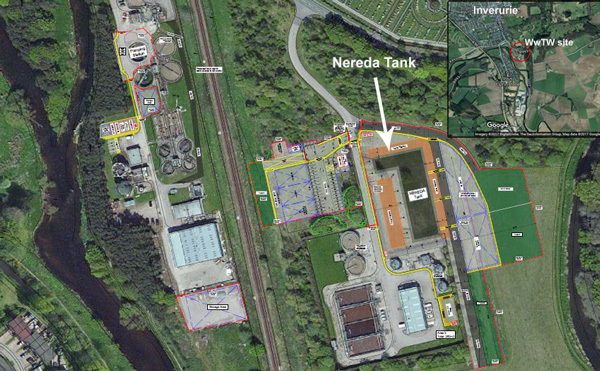Images have been released which show how a £21million sewage plant being built in Aberdeenshire will ultimately look, with full construction due to get under way soon.
Preparatory work on Scottish Water’s new purifying system and pumping station, on Inverurie’s Keithhall Road, has been ongoing for months.
The activity will enter a new phase at the beginning of next week, with a 20mph speed limit being put in place around the site to ensure the safety of workers.
Scottish Water is using a pioneering type of technology on the treatment facility, which is designed to reduce energy usage and treat waste water more effectively.
The plant will be the first in Scotland where the process is used, although it has been tested at other sites in the UK and across Europe.
And the firm yesterday marked the scheme’s progress by publishing detailed design images of how the vast plant will eventually look.
Scottish Water’s Gavin Steel said: “The work in Inverurie uses the latest technology to deliver long-term improvements to waste water treatment, and reduced running costs for our customers.
“The new treatment works will also be at a higher elevation, reducing the risk of flooding on site and helping to protect the local environment during flood events.”
At present, treatment works are located on both sides of the Aberdeen to Inverness railway line near Inverurie.
The works located at the Port Elphinstone side of the tracks will gradually be decommissioned under the plans.
The 20mph road restriction will run from the original treatment works to about 330ft past the new site, east of the railway line.
It is expected to be in place for the 18-month duration of the main construction phase.
A four-week road closure on the B993 will be required at a later stage of the project, which will be advertised in advance.
Aberdeenshire councillors endorsed the scheme last November despite fears that it could worsen flooding.
A number of properties in Keithhall Road were swamped when the River Don burst its banks during Storm Frank last January.
However, the Scottish Environment Protection Agency (Sepa) did not object to Scottish Water’s proposals on flood-risk grounds.
